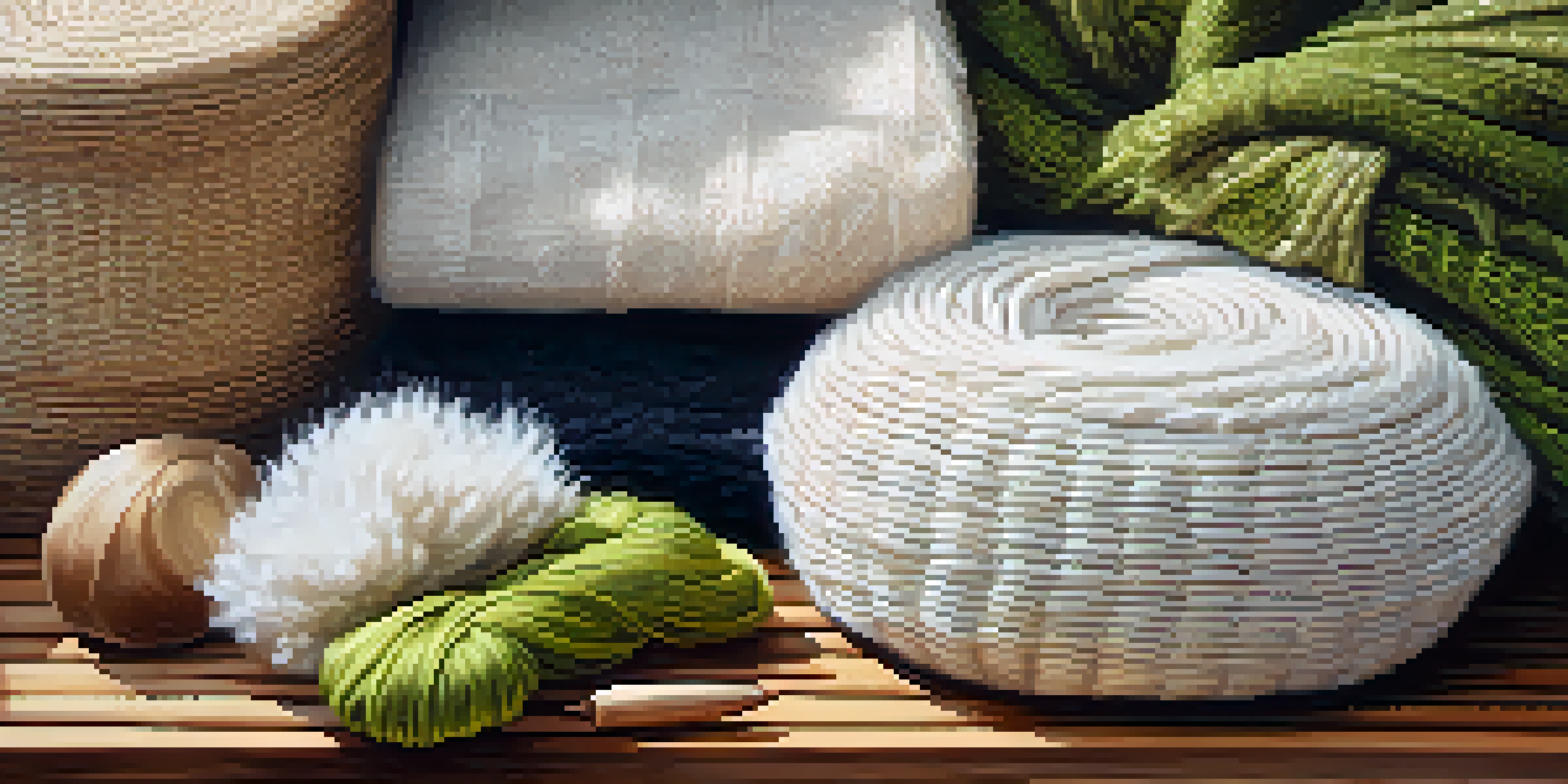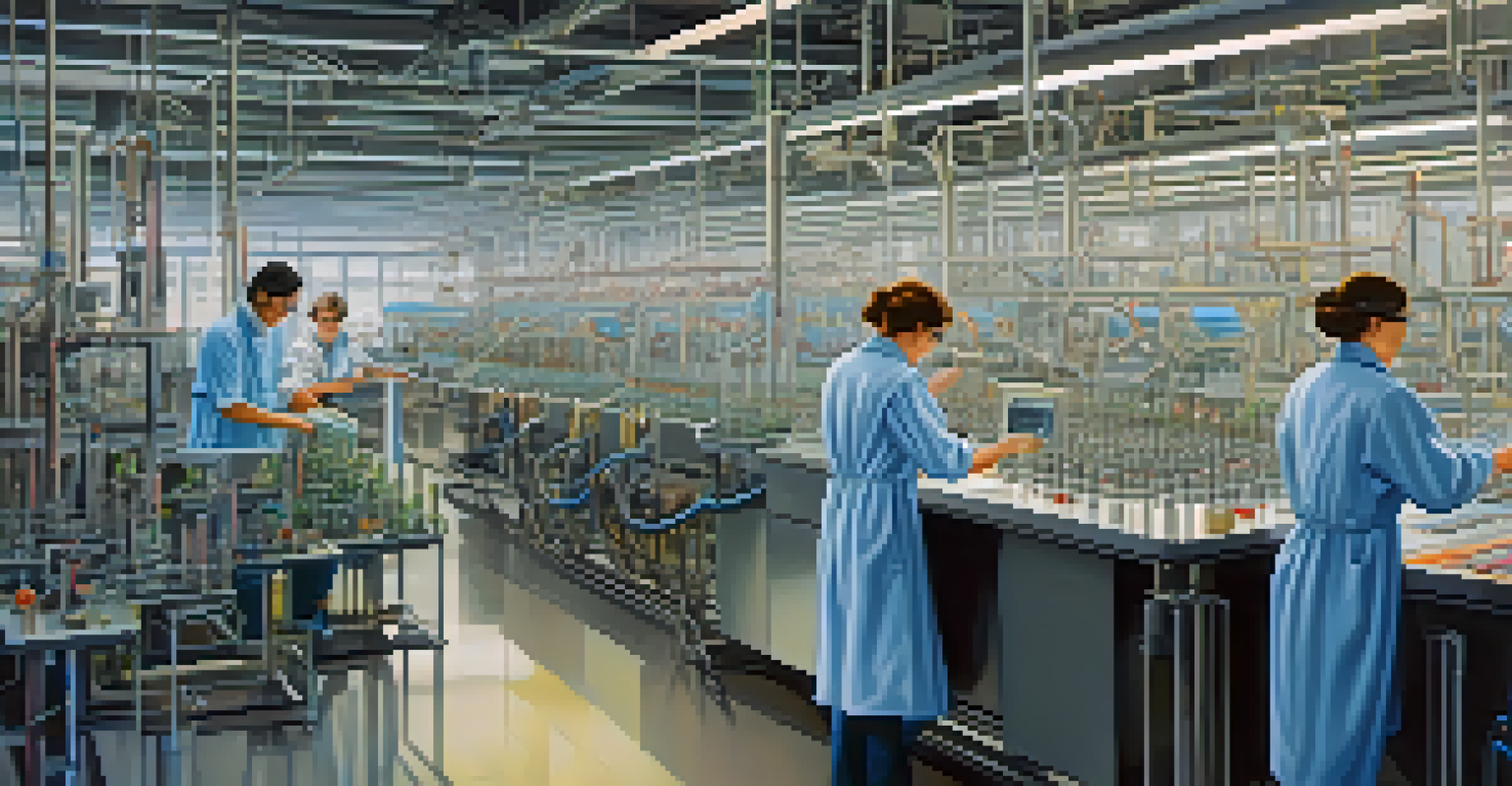The Rise of Plant-Based Textiles: A Sustainable Future Ahead

Understanding Plant-Based Textiles and Their Benefits
Plant-based textiles are materials made from natural sources like cotton, hemp, and bamboo. These fabrics are not only biodegradable but also often require fewer resources to produce compared to traditional synthetic textiles. The growing awareness of environmental issues is driving consumers towards these sustainable options.
The fashion industry is one of the largest polluters globally, particularly due to the widespread use of synthetic fibers like polyester and nylon.
Using plant-based textiles can significantly reduce our carbon footprint and reliance on fossil fuels. For instance, organic cotton has a much lower environmental impact compared to conventional cotton, which often relies heavily on pesticides. This shift towards sustainable materials is essential for a healthier planet.
Moreover, plant-based textiles often offer better breathability and comfort, enhancing the overall wearing experience. As people become more conscious of what they wear and its impact on the environment, the demand for these fabrics continues to rise, paving the way for innovation in the industry.
The Environmental Impact of Traditional Textiles
The fashion industry is one of the largest polluters globally, particularly due to the widespread use of synthetic fibers like polyester and nylon. These materials are derived from petroleum, contributing to pollution and greenhouse gas emissions during production. As awareness of these issues grows, many are calling for a reevaluation of our textile sources.

In addition to their production, synthetic textiles often take hundreds of years to decompose, leading to significant landfill waste. This environmental burden is prompting consumers and brands alike to seek more sustainable alternatives. Plant-based textiles represent a viable solution to mitigate these adverse effects.
Benefits of Plant-Based Textiles
Plant-based textiles offer eco-friendly alternatives that reduce environmental impact and enhance comfort.
By transitioning to plant-based options, we can help reduce the overall environmental footprint of the fashion industry. This change not only addresses pollution but also promotes biodiversity by supporting sustainable agricultural practices. The shift is not just necessary; it's a responsible choice for the future.
Innovative Plant-Based Textiles in the Market
Today, a variety of innovative plant-based textiles are entering the market, including fabrics made from banana fibers, soy, and even coffee grounds. These materials are not only environmentally friendly but also offer unique aesthetic qualities and textures. The creativity in their application is broadening the horizons of fashion and design.
By continuing to support and promote these innovations, we can help shape an industry that values both style and the planet.
Brands are increasingly experimenting with these textiles to create stylish, sustainable clothing options. For example, companies are blending different plant fibers to enhance durability while maintaining a low environmental impact. This innovation is crucial in attracting consumers who prioritize sustainability without sacrificing style.
As these new textiles gain popularity, they are encouraging more brands to adopt eco-friendly practices. The introduction of plant-based options is reshaping the fashion landscape, highlighting the importance of sustainability in design and production. This shift could very well define future trends in the textile industry.
Challenges Facing Plant-Based Textile Adoption
While the rise of plant-based textiles is promising, there are challenges to widespread adoption. One significant hurdle is the perception of plant-based fabrics as less durable compared to their synthetic counterparts. Overcoming this stereotype requires education and awareness campaigns to inform consumers about the advancements in technology that enhance durability.
Another challenge is the scalability of production. Many plant-based textiles are still produced in smaller quantities, which can drive up costs for consumers. As demand grows, investing in more sustainable production methods and infrastructure will be essential to making these textiles more accessible.
Challenges in Adoption
Despite their advantages, plant-based textiles face hurdles such as durability perceptions and production scalability.
Additionally, the availability of raw materials can pose a constraint. Climate change and fluctuating weather patterns can impact crop yields, affecting the supply chain for plant-based textiles. Addressing these challenges will require collaboration across the industry and a commitment to sustainable practices.
Consumer Trends Driving the Plant-Based Textile Movement
Consumer preferences are shifting dramatically, with more individuals seeking sustainable and ethical fashion choices. The rise of social media has empowered consumers to make informed decisions about their purchases, leading to an increased demand for transparency in the fashion industry. This trend is a driving force behind the growth of plant-based textiles.
Younger generations, in particular, are advocating for sustainable practices and are willing to invest in brands that align with their values. This demographic is increasingly researching products and holding companies accountable for their environmental impact. As a result, brands are responding by offering more eco-friendly options, including plant-based textiles.
Additionally, the rise of second-hand shopping and clothing swaps has changed the way we view consumption. By prioritizing sustainability, consumers are not only looking for new plant-based options but are also open to upcycling and repurposing older garments. This shift in mindset is essential for fostering a more sustainable fashion future.
The Role of Technology in Advancing Plant-Based Textiles
Technology plays a crucial role in enhancing the production and quality of plant-based textiles. Innovations like bioengineering and textile recycling are pushing the boundaries of what is possible, creating fabrics that are both sustainable and high-performing. For example, advancements in fiber extraction techniques are making it easier to produce textiles from a wider array of plant sources.
Furthermore, research into alternative materials, such as lab-grown fibers, is gaining traction. These breakthroughs could lead to a new generation of textiles that minimize environmental impact while providing the durability consumers expect. The intersection of technology and sustainability is paving the way for a more responsible textile industry.
Consumer Demand Drives Change
Shifting consumer preferences towards sustainability are fueling the growth and innovation of plant-based textiles.
As brands adopt these technologies, we can expect to see increased investment in sustainable practices overall. This not only benefits consumers but also encourages a circular economy, where materials are reused and recycled rather than discarded. The potential for innovation in plant-based textiles is vast, and technology will continue to lead the charge.
Future Outlook: A Sustainable Textile Industry
The future of the textile industry is poised for transformation as plant-based textiles gain traction. With ongoing advancements in technology and shifting consumer preferences, we can anticipate a landscape that prioritizes sustainability. This shift represents a collective effort towards reducing environmental impact and promoting ethical practices within the fashion community.
As more brands embrace plant-based textiles, we may see a rise in collaborative efforts to create industry-wide standards for sustainable practices. This cooperation could lead to greater awareness and education about the benefits of these materials, fostering a culture of responsibility among consumers and producers alike.

Ultimately, the rise of plant-based textiles signifies a critical step towards a more sustainable future. By continuing to support and promote these innovations, we can help shape an industry that values both style and the planet. It's an exciting time to be part of this movement, and the journey ahead promises to be both inspiring and impactful.